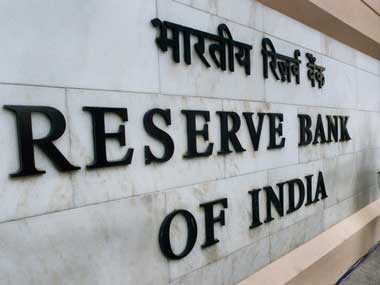The Reserve Bank of India (RBI) should factor in a potential Fiscal Cliff event in the US in its policy review on 31 July. Global bond markets are factoring in the worst for economic growth, while domestic bond markets are testing the RBI’s resolve in holding on to rates in the face of weakening growth expectations. The potential Fiscal Cliff could turn the tide in favour of rate cuts in July.
Ben Bernanke, the US Federal Reserve Chairman, pointed out the Fiscal Cliff the US is facing in 2013 as a major threat to economic growth and labour markets. Bernanke forecast that if tax breaks end and spending cuts begin, which is what the Fiscal Cliff is all about, the US will enter into a minor recession in 2013. He urged the government to take action to reduce the effect by framing a medium-term fiscal consolidation plan. He, however, did not announce a third round of quantitative easing to improve labour market sentiments and improve business and consumer confidence in the US.
[caption id=“attachment_383389” align=“alignleft” width=“380”]  Ben Bernanke, the US Federal Reserve Chairman, pointed out the Fiscal Cliff the US is facing in 2013 as a major threat to economic growth and labour markets. Reuters[/caption]
US policy rates are close to zero percent and will be kept low till late 2014 as per the guidance given by the Fed. The central bank has pledged that it will use all tools as appropriate to boost labour markets and economic growth. If US policy makers fail to act to stem the potential effects of a “Fiscal Cliff”, the Fed will act by pumping in money to counter some of the withdrawal symptoms of higher taxes and lower spending.
The RBI will have to watch out for the progress on the US economy in framing its own policy stance. If the US is likely to go into a mild recession in 2013, India will face its after effects. Revenues from IT service exports to merchandise trade will be hit, impacting the domestic economy. The Indian economy is in one of its worst phases with fourth quarter GDP growth at a nine-year low of 5.3 percent.
The RBI has started easing monetary policy over the last seven months by cutting banks’ cash reserve ratio (CRR) by 125bps and its repo rate by 50bps. The central bank’s policy review is happening after a dismal Index of Industrial Production (IIP) of 2.4 percent in May as against 6.2 percent a year ago.
India’s imports for June 2012 fell by over 13 percent year on year and close to 16 percent month on month. Lower imports to a certain extent reflect fall in oil prices (brent crude has fallen by close to 20% from peaks over the last one year) but it also reflects a weakening economy as substantiated by weak GDP growth and weak IIP.
Inflation is proving to be a dampener for the RBI as well as the market, which is expecting monetary easing by the RBI. Inflation as measured by the Wholesale Price Index for June 2012 came in at 7.25 percent, below 7.55 percent in May. Inflation is expected to stay sticky at around 7.5 percent due to rising food prices.
Monsoons have disappointed this year with rainfall falling 22 percent below average. Weak monsoons can push up food prices but bring down GDP growth and the RBI has to strike a fine balance between inflation driven by lack of adequate food supply and inflation driven by demand, which can weaken due to poor monsoons.
Bond markets have started factoring in weak economic growth with swap yields at 10-month lows and bond yields at over one-year lows. Five-year Overnight Index Swap yields are trading at below 7 percent levels, down 60 bps over the last four months, while ten-year bond yields are trading at below 8.1 percent levels, down 40 bps over the last four months.
Globally bond markets are factoring in steep falls in GDP growth and are expecting central banks to keep interest rates at record lows for an extended period of time. Ten-year bond yields in the US, Germany and Japan are trading at or close to all-time lows. A Fiscal Cliff event in the US will further take down global bond yields.


)
)
)
)
)
)
)
)
)



